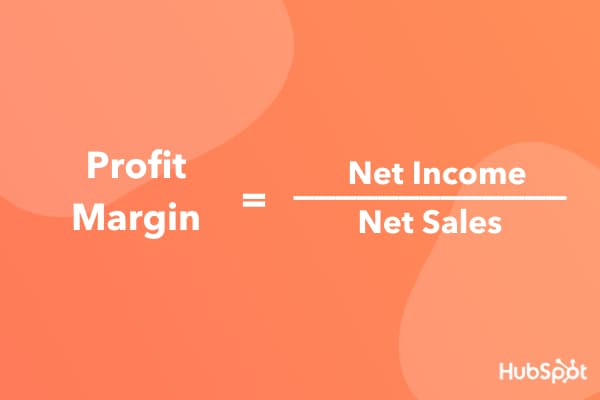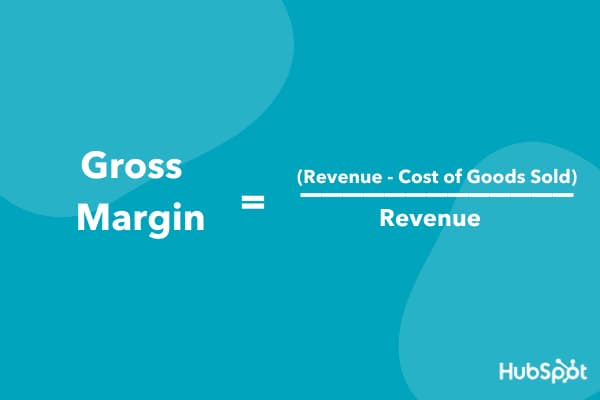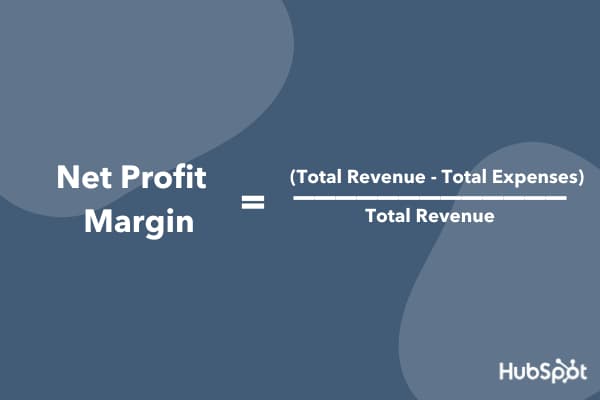how to find profit margin
"I don't really want my business to have higher profits," said no entrepreneur ever. For most business owners, their main objective is to bring in as much revenue as possible and to increase the earning potential of their business over time. While having a solid understanding of how much money your company is bringing in is important, revenue values alone don't provide enough information to help you gauge the health and growth potential of your small business. To gain a solid understanding of your company's bottom line, the profit margin is an essential data point. Profit margin measures what percentage of your company's net income comes from sales. Because this figure also factors in your business expenses, it measures how well your company is able to manage expenses relative to sales. Use the following formula to calculate the profit margin for your business. To calculate profit margin simply divide net income by net sales. Let's break down the variables of this equation further. An entrepreneur with a boutique baking business selling specialty cookies made $100,000 in gross sales in one year. The company issued $5,000 in refunds, bringing their net sales to $95,000 for the year. This same year, the company had $70,000 in expenses bringing net income to $30,000. With these values, here is how we calculate the profit margin for the boutique baking company: Profit Margin = $30,000 / $95,000 x 100 = 31.5% The profit margin we calculated tells us the boutique baking business was able to convert 31.5% of sales into profit. While this is a fairly straightforward example, profit margin values and complexity can vary depending on the company because costs can vary greatly. It is important to note that there is no single profit margin number that separates a good profit margin from a bad profit margin. In fact, how good your company's profit margin is largely depends on your industry. In 2019, commercial leasing companies had some of the highest reported profit margins, with an average of nearly 50%. On the other hand, manufacturing companies had an average profit margin of only 10%. This is likely due to the higher costs for materials and labor compared to commercial leasing, which tends to have lower operating costs. When trying to gauge how well your company is performing based on profit margins, look to the average profit margins for your industry. Additionally, the maturity of your business also plays a role. For new and scaling companies, costs tend to be higher which can lead to lower profit margins compared to more established companies. Now that we understand the basics of calculating a company's profit margin, let's discuss the other calculations that may be helpful for determining the profitability of a small business: gross margin and net profit margin. This variation of the profit margin equation calculates how much profit your company has after accounting for the cost of goods sold. Cost of goods sold includes direct expenses related to the production and sale of your company's product. This value does not include non-operating expenses. To find the gross margin, subtract the cost of goods sold from total revenue and divide this figure by total revenue. Here's what that equation looks like: Now let's apply it to an example. Say your company earned $2,000,000 in revenue this year. The total costs related to your product were $650,000 for the year. Here's how you would calculate gross profit margin: Gross Margin = ($2,000,000 - $650,000) / $2,000,000 = 67.5% Ideally, your company's gross profit margin should be high enough to cover your operating costs allowing some profit to be leftover. Any additional funds can be used for other expenses such as dividend payments or marketing collateral. This value can also be helpful for calculating the profit margin of a specific product or offering, instead of finding the margin for the company as a whole. To calculate the gross profit margin of a specific product, use the revenue earned from sales of the product, and the costs related to the production of the product. Net profit margin calculates how much of your total revenue is profit. Instead of accounting for just the direct cost of creating and selling a product like gross profit margin, net profit margin accounts for all expenses. To calculate net profit margin, subtract total expenses from total revenue, and divide that value by total revenue. Here's how the equation for net profit margin looks: Net Profit Margin = ($2,000,000 - $1,500,000) / $2,000,000 = 25% For many businesses, it is expected to have a net profit margin that is lower than your gross profit margin. This is due to the addition of non-operating expenses. If you find your net profit margin is lower than you would like, or lower than what is needed for the health of your business, you can look for ways to reduce your costs — which is an easier variable to control than trying to drastically increase revenue in a short amount of time. Now that we understand what gross margin and profit margin are, let's discuss the similarities and differences between the two. Both gross and profit margins provide valuable insight into the financial health of a business. These values measure how effective a company currently is at earning a profit based on the goods and services sold. The difference between the two involves the factors used to determine profitability. Gross margin shows how profitable a company is above and beyond how much they spend to create and sell their products. Profit margin measures how much a company earns from each sale they make. Understanding both is important for getting a well-rounded view of the financial performance of your company, and are useful data points for determining both short and long-term financial strategies. Check out this post to learn accounting basics to better understand the financial health of your company. 
What is profit margin?
Profit Margin Formula
 The numbers needed to calculate these values can all be found on your company's balance sheet. Here's an example.
The numbers needed to calculate these values can all be found on your company's balance sheet. Here's an example.What is gross margin?
Gross Margin Formula

What is net profit margin?
Net Profit Margin Formula
 Let's put it into use with an example. If your business earns $2 million in revenue and has $1,500,000 in total expenses, you can calculate your net profit margin as:
Let's put it into use with an example. If your business earns $2 million in revenue and has $1,500,000 in total expenses, you can calculate your net profit margin as:Gross Margin vs. Profit Margin


Originally published Jun 15, 2020 3:45:00 PM, updated June 16 2020
how to find profit margin
Source: https://blog.hubspot.com/sales/good-profit-margin-for-product
Posted by: williamswelice.blogspot.com

0 Response to "how to find profit margin"
Post a Comment